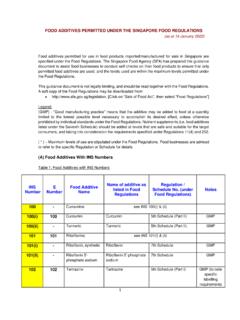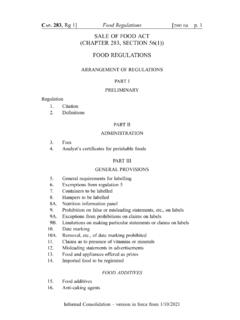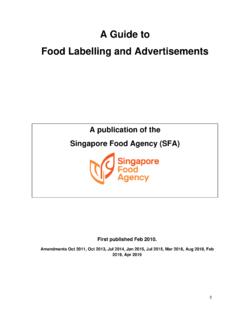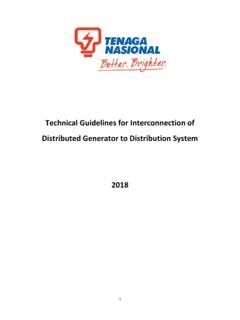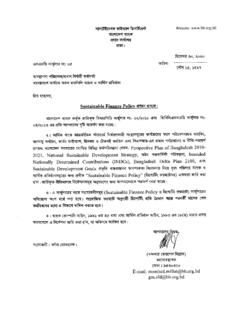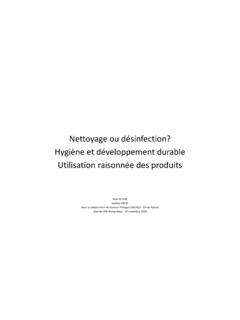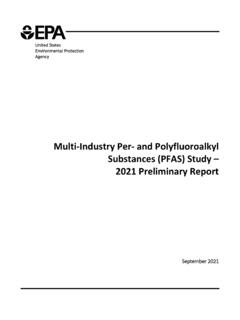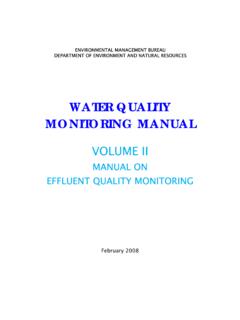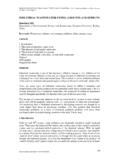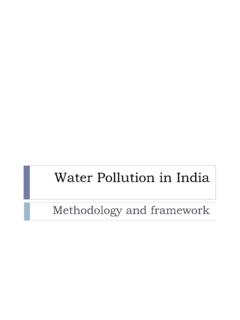Transcription of STARTING A FARM: An Industry Guide
1 STARTING A FARM: An Industry Guide e Guide will walk you through the key guidelines and procedures needed to start a land-based or indoor farm in a farm : An Industry Guide3 MSE s ForewordSAFEF s ForewordIntroductionSingapore s VisionA Unique Landscape to Operate inAn OverviewBuilding Up a Successful farm : Key StepsBid for Agriculture Land Other Space OptionsLanduse Zoning and PlanningStructural and Building SafetyParking Places and Street PlansTrade Waste and EffluentGreenery Provision and Tree ConservationUsed Water and Stormwater DischargeFire Safety RequirementsFarm Licence ApplicationOther Details Plan Processing FeesOther Details Premium for Land EnhancementOther Details Property TaxOther Details Agritech Work Permit SchemeOther Relevant Government Agencies or ResourcesCodes and Regulations Referenced in GuideHelpful Contacts46810111216172628364248535868768 1848792949596 ContentsMSE s ForewordThe 30-by-30 goal can only be
2 Achieved in close partnership with our agri-food Industry . The Government will continue to provide space for farms - such as new agriculture land at Lim Chu Kang, rooftops of HDB multi-story car parks, and sea-based farming in the deeper southern waters of Singapore. We will also make financial grants available, such as through the Agriculture Productivity Fund and, more recently, the 30x30 Express grant. We will also ensure that our regulatory regime facilitates the setting up of safe and productive farms. Last year, the Singapore Food Agency (SFA) and Enterprise Singapore established a Regulatory Workgroup (RWG) involving 11 other government agencies to review policies and streamline regulatory requirements for new farms.
3 We are glad that some of the new farms that had been awarded agriculture land under the SFA s Tranche 1 to Tranche 5 land sales have benefited from this review and facilitation. To help our farmers better understand and navigate the regulatory requirements, the RWG has also developed this Industry Guide in consultation with new and existing farmers. I thank the Singapore Agro-Food Enterprises Federation Limited and our farmers for your invaluable feedback to help refine the Guide . I hope our farmers will find this Guide useful and informative. Our agri-food Industry has a productive and bright future.
4 Government agencies will work closely with farmers to expand food production in sustainable and resource efficient ways, which leverage technology and generate good skilled jobs for Singaporeans. Let us work together to strengthen Singapore s food security. Ms Grace Fu Minister for Sustainability and the Environment August 2020 The supply of safe and fresh food is essential to the health of Singaporeans and security of Singapore. Challenges such as climate change, trade tensions and the COVID-19 pandemic remind us starkly that we cannot take food security for granted. We must strengthen Singapore s resilience against disruptions in global food supply chains.
5 The name of the Ministry was recently changed from Ministry of the Environment and Water Resources to Ministry of Sustainability and the Environment to reflect the greater importance placed by the Government on sustainability, including the resilience of our food supply. Local food production plays a key role in our food security. In 2019, my Ministry announced our 30-by-30 goal, to meet 30 per cent of Singapore s nutritional needs with locally produced food by 2030. In 2020, we launched the Singapore Food Story campaign to rally Singaporeans to support food security, in particular, to buy and consume local food produce.
6 STARTING a farm : An Industry Guide4 STARTING a farm : An Industry Guide5 SAFEF s Forewordhe agriculture scene in Singapore has changed drastically over the decades. With greater emphasis on food security in recent years, the government restarted efforts to tender out agriculture land for food farming in 2017. We, the Singapore Agro-Food Enterprises Federation Limited (SAFEF) was also set up in the same year, as a not-for-profit organisation, to represent, advance and promote the agro-food sector for livestock, food fish and vegetable farms. Despite being a relatively young Federation, we have a wide network of local farmers as our Members.
7 One of our major roles is to be the voice of the Industry and we have been working closely with the various government agencies, especially the Singapore Food Agency (SFA) and Enterprise Singapore (ESG) for the betterment of the Industry . A case in point is that after receiving feedback from our Members who have won SFA land tenders about the regulatory challenges they face in setting up high-tech farms in Singapore, SAFEF has actively engaged SFA and ESG on these issues. As a result of this active engagement, the agencies have come together to jointly develop this Industry Guide , based on the Industry s feedback.
8 The aim is to help farmers and farmers-to-be understand the regulatory requirements in setting up a high-tech farm in Singapore today. I note that much effort has been put in and many stakeholders were involved in making this Guide possible. I found the Helpful Tips dotted in various sections of the Guide particularly useful. These tips highlight the key considerations one must have before tendering for a farm plot. I urge you to take special note of the recommendation to engage your team of Qualified Persons (QPs), including technical experts such as Architects, Mechanical & Electrical (M&E) Engineers and Civil/Structural Engineers, early as their advice would help you to work out the capital investments required.
9 This preliminary work is critical for the companies to be more prepared. The publication of this Industry Guide is timely, good and useful; and I am heartened by the commitment from the agencies to hear out the Industry , Guide us along and take steps to improve existing processes. I look forward to stronger partnerships together to work towards ensuring food security in George Huang, Chairman, SAFEFTS tarting a farm : An Industry Guide67 STARTING a farm : An Industry GuideStarting a farm : An Industry Guide89 STARTING a farm : An Industry GuideIntroductionWhat is the High-Tech Farming Sector About?Highlights of This GuideHigh-tech farming generally refers to intensive farming in building or controlled environments.
10 High-tech farming systems now allow production to take place inside buildings ( indoors). This enables more food and produce to be grown, at a consistently high quality. Traditional methods of farming are heavily reliant on environmental factors that cannot be controlled, such as sun light, soil quality and water. In contrast, high-tech farming systems are typically enclosed to prevent contaminants, built up in a vertical racking structure to enhance productivity, and feature a range of environment controls, such as LED lighting. The prospect of having fresh, quality produce available all year round is what makes high-tech farming so attractive.
